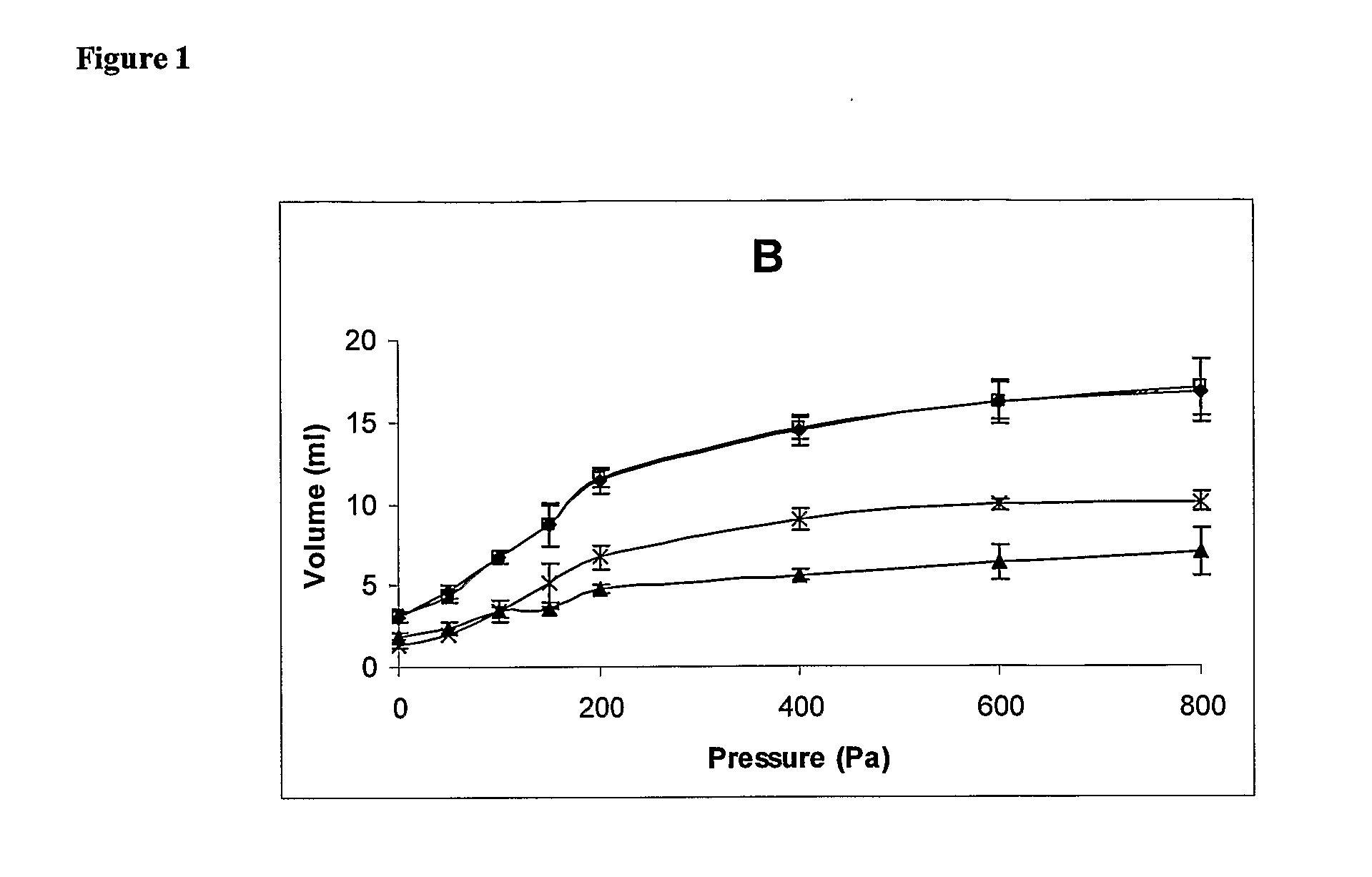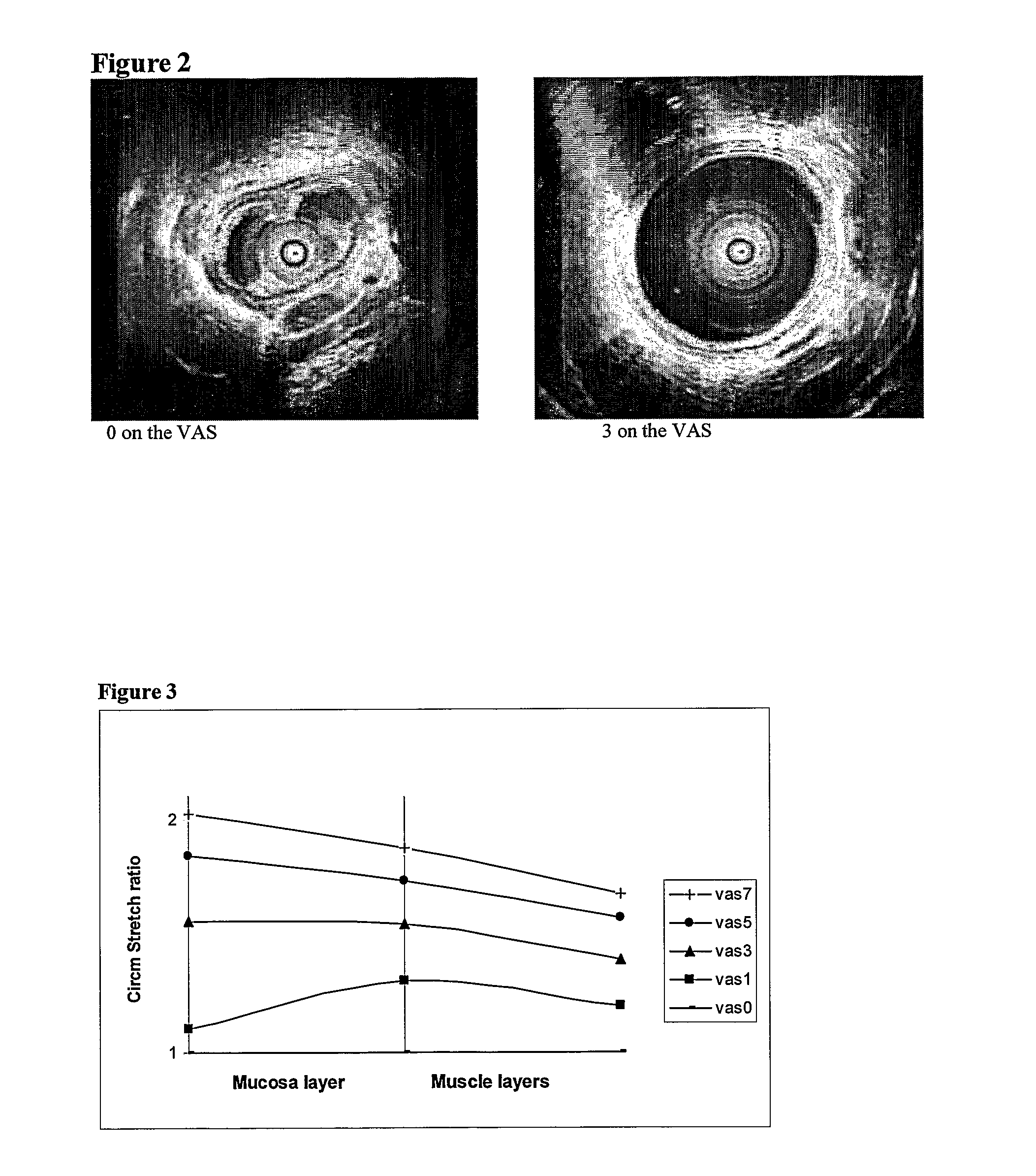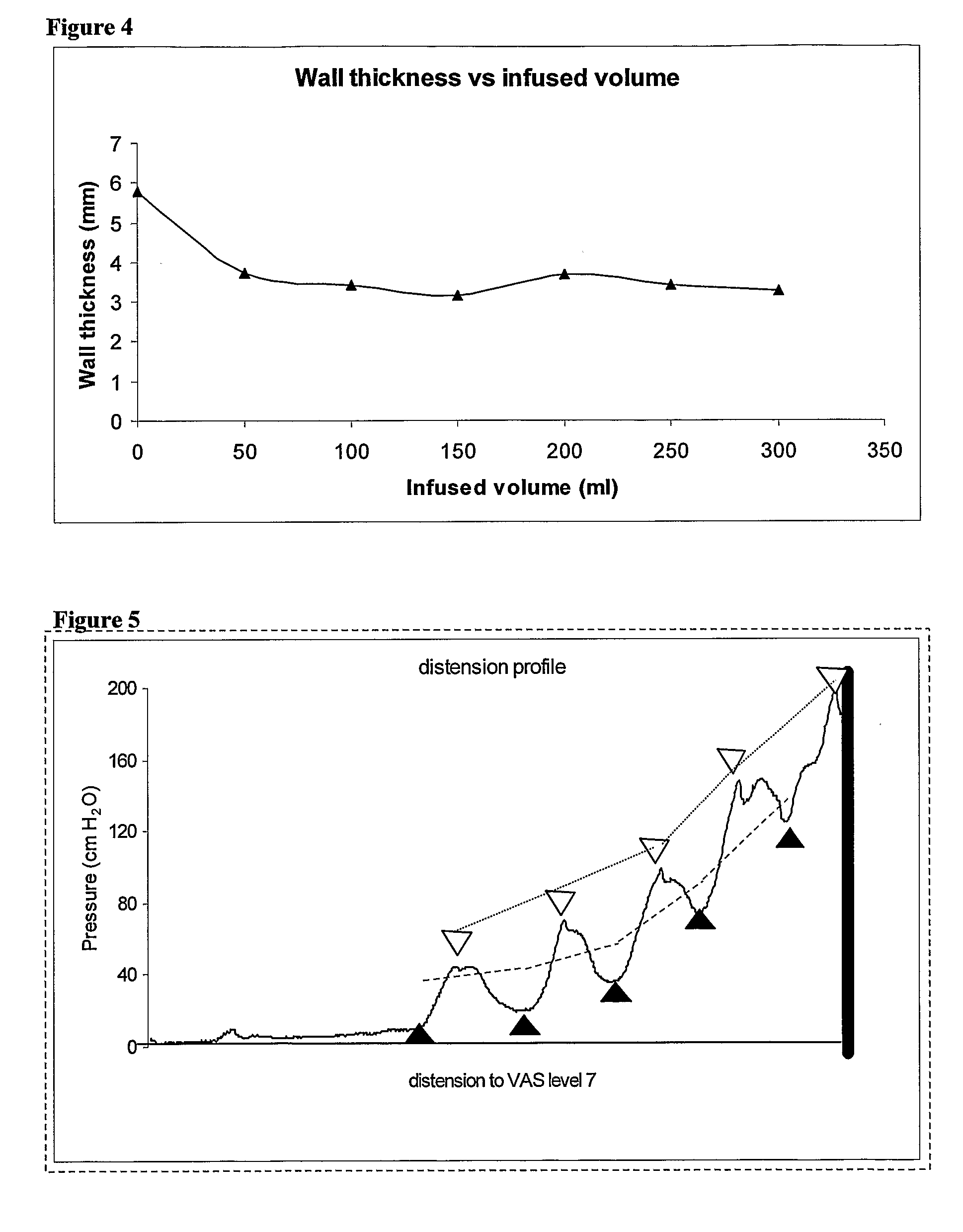Morphometry of a Bodily Hollow System
a morphometric and hollow system technology, applied in the field of morphometric properties of bodily hollow systems, can solve the problems of affecting the morphometric properties of the body, the primary mechanism of symptoms elicited by gi distension remains unclear, and the relationship between biomechanical properties and sensation, and the biomechanical parameters such as wall tension and strain have not been given much attention
- Summary
- Abstract
- Description
- Claims
- Application Information
AI Technical Summary
Benefits of technology
Problems solved by technology
Method used
Image
Examples
Embodiment Construction
[0032]FIG. 14 schematically illustrates a catheter, the catheter being provided with an inflatable balloon (the catheter may be provided with more balloons), the balloon(s) being situated between a proximal and a distal end of the catheter. The catheter and thereby the balloon is inserted into the esophagus of a person. The catheter is inflated to a given level, so as to exert a pressure on the esophagus and thereby imposing a morphological change to the esophagus. This causes the muscles surrounding the esophagus to react by trying to drag the balloon and the probe away from the tract.
[0033] The method and apparatus serve to determine physical properties of hollow internal organs comprising means for determining morphometric parameters, thermal measures, and mechanical parameters. In a preferred embodiment morphometric properties will be obtained by analysis of medical images, often serial slices of 2D images, as illustrated in FIG. 2, with respect to measures such as wall thickne...
PUM
 Login to View More
Login to View More Abstract
Description
Claims
Application Information
 Login to View More
Login to View More - R&D
- Intellectual Property
- Life Sciences
- Materials
- Tech Scout
- Unparalleled Data Quality
- Higher Quality Content
- 60% Fewer Hallucinations
Browse by: Latest US Patents, China's latest patents, Technical Efficacy Thesaurus, Application Domain, Technology Topic, Popular Technical Reports.
© 2025 PatSnap. All rights reserved.Legal|Privacy policy|Modern Slavery Act Transparency Statement|Sitemap|About US| Contact US: help@patsnap.com



